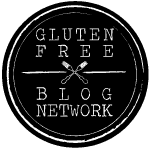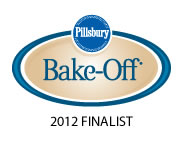
BS"D
I was cleaning out a cabinet today and found a class picture from Lillie's 2 year old play group. She seemed so small, staring at the camera with a short mop of red curls and the then ever present pony tails sticking straight up from both sides of her head. A row back the boy who insisted on wearing his sister's skirt that day. The absurdity of his act preserved for eternity. I glanced back at Lillie and noticed how thin she looked, and pale. Very pale. I never really was concerned with it until the first gastroenterologist we went to for her persistent stomach aches mentioned it. I knew she was pale genetically, but because she wasn't absorbing iron and other nutrients, never occurred to me. I silently kicked myself again for waiting over a year to take her to a specialist. Kicked myself twice since I don't even need a referral. Her pediatrician recommended a few crackers in the morning to settle her stomach and assurances that 50% of all children her age have stomach pains. Celiac wasn't even on my map at the time. Then of course, we took a detour.
We just marked the 2 year anniversary of Lillie's celiac diagnosis. At the time, I needed a new road map for the area we were thrust into. In modern terms, I would say my GPS had to recalculate. She was diagnosed a few days before Passover. My freezer was full of (wheat) matzo meal cakes and kugels. My husband ran out to get her the oh so expensive Oat Matzo ($25 per box), and I scrambled to make her dishes she could eat, while trying to figure out what she could eat exactly. I felt like not only had I been sent on an annoying detour, but my car went off the road into a forest, and I had to find my way out.
By the end of the first day of her diagnosis I had already ordered several cookbooks and general advice books. One of the first books I read on living with celiac disease was "Gluten-Free Girl" by Shauna James Ahern---who writes an eponymous blog. It is a combination guide for celiacs, memoir and cookbook. Given that Ms. Ahern, is a writer and teacher of creative writing, the book was very well written and wildly popular. It was not only informative for those seeking a gluten free lifestyle, it was just a good read, plain and simple, about one woman's journey in health, life and love. Like most Americans suffering from celiac disease, she didn't get diagnosed overnight. It took time, it was a process. A painful process. But she found her way in the gluten-free world, as well as her way into the heart of a great chef who learned about cooking gluten-free. At one point her husband to be even cooked everything in his restaurant gluten-free, in order that Shauna would be able to eat everything there (if that's not love, I don't know what is!).
The culmination of the Aherns experiences together navigating the gluten free foodie world is a second book, Gluten-Free Girl and The Chef. Although this is a cookbook, there are essays in between the recipes that give a glimpse into their lives and love. The photos in the book are lush and the prose even lusher.

Gluten-Free Girl and The Chef is definitely a book for foodies, filled with recipes centered around locally grown/raised, organic, slow food. Recipes include, "gourmetified" classics like smoked-salt caramel ice cream, tuna-noodle casserole with cremini mushrooms and thyme, house cured salmon, and sloppy joes with piment d'Espelette and veal stock. Some of the ingredients may seem daunting, such as kefir lime leaves or white-truffle honey, which, perhaps are readily available to the Aherns in Seattle's bustling Pike Place market, but not at your local supermarket. Nevertheless, there is something for everyone. If you don't have time or desire to make your own gluten-free pasta as the Aherns do, you can certainly sub store bought pasta in their dishes. And when you have the time to do cook something slow, it is worthwhile to try a recipe from this book.
The recipes I selected from the book to present are perfect for the upcoming Passover holiday. They are two of the more simpler recipes, with ingredients that should be fairly easy to come by.
Have a tasty and happy Passover!

Daniel Ahern, "the chef" learned to make this from Tom Colicchio at Gramercy Tavern. I thought it looked similar to Sefardi style charoset. Either way, it can be used for passover, and would make a nice accompaniment to meat or chicken, and would certainly be a great spread for matzoh!
Fig Chutney
from "Gluten-Free Girl and the Chef" by Shauna James Ahern and Daniel Ahern, p. 145
3 pints fresh figs
1 Tablespoon olive oil
2 large shallots, peeled and thinly sliced
1 teaspoon fresh thyme, chopped
1/2 teaspoon Saigon cinnamon
1/4 teaspoon freshly grated nutmeg
1 cup ruby red port
Remove the stems from the figs. Quarter them and set them aside.
Set a large saute pan over low heat and pour in the oil. Add the shallots and cook, stirring, until they are softened and translucent, about 5 minutes. Add the thyme, cinnamon, and nutmeg and cook until the herb and spices are fragrant in the kitchen.
Add three-quarters of the fresh figs. Pour in the port and stir. Raise the heat to medium and cook the chutney, stirring frequently to prevent burning, until it is reduced and starts to thicken, 15 or 20 minutes; however, do not over stir the chutney, because you want the figs somewhat chunky. Stir in the remaining figs and cook for another 3 to 4 minutes.
Chill the chutney in a long, shallow casserole dish, so it can chill evenly; if you put it in a deep container, it will keep warm and continue cooking, and the bottom will be hot and turn sour faster.
Yield: 2 cups
Everyone seems to buy a big horseradish root for the seder plate, then not know what to do with it the next day. You can use it in this dish, which makes a lovely appetizer for the holiday meals. Use mayonnaise instead of sour cream if you are serving it with a meat meal. During the year you can sub-Tofutti sour cream or silken tofu for the non-dairy eaters amongst your guests. If you are serving someone who is both dairy and egg allergic, omit the horseradish cream and make their stacks with tomatoes, salmon, lemon and herbs.
Smoked Salmon and Tomato Napoleon with Horseradish Sour Cream
from "Gluten-Free Girl and the Chef" by Shauna James Ahern and Daniel Ahern, p. 177
1/2 cup sour cream
1 Tablespoon prepared horseradish
1 Tablespoon finely grated fresh horseradish
1 teaspoon fresh lemon juice
2 Tablespoons finely chopped fresh chives
Kosher salt and cracked black pepper
4 large ripe heirloom tomatoes (in season)
8 ounces sliced smoked salmon
In a food processor, combine the sour cream (or mayonnaise), prepared horseradish, grated horseradish, and lemon juice. Puree until smooth and then stir in the chives by hand. Season with salt and pepper.
Slice the tomatoes to roughly 1/4-inch thickness. Season with salt.
Start with a slice of tomato. Dollop some horseradish sour cream on top. Nestle a piece of smoked salmon in it. Repeat, going all the way up until you cannot eat any higher.
If you are presenting these on a platter, drizzle the sour cream sauce around the plate.
Yield: 4 servings











